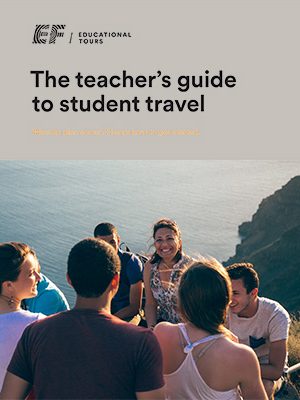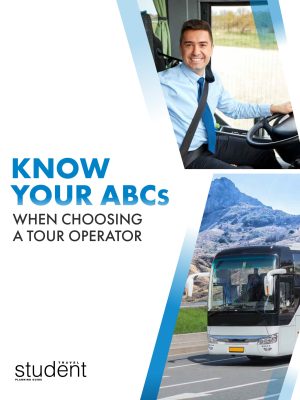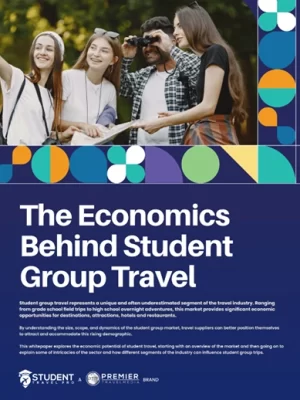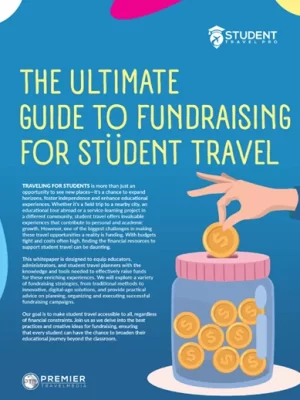We help you craft a fun and engaging educational student itinerary packed with exciting learning in real-time settings outside the classroom
As an educator or trip organizer, educational field trip planning can be a rewarding experience if you have a clear roadmap and tips for creating an engaging itinerary. It’s crucial to design field trip itineraries that not only offer fun activities but also provide intellectual stimulation and opportunities for experiential learning. This approach fosters a deeper understanding and retention of knowledge among students.
By strategically planning your field trips, you can create a balance between educational value and exciting adventures. This approach ensures that students not only enjoy the trip but also gain maximum educational value, turning field trips into immersive and memorable learning experiences.
Here is a guide on how to craft student itineraries for field trips that are not only entertaining but truly enriching, intellectually stimulating and unforgettable.

Connect Student Field Trip Activities to the Curriculum
One of the most impactful strategies to boost the educational value of a school field trip is to integrate the itinerary with your classroom curriculum. By planning your field trip in conjunction with your curriculum, you ensure that the trips content directly complements what students are studying, making their learning experience more comprehensive and meaningful.
Planning your curriculum and educational field trips together allows you to seek out destinations, landmarks, museums, parks, and experiences that directly relate to and expand upon what students are learning in the classroom. Not only are you saving yourself time by planning both together, but your curriculum can also provide a crystal-clear map for topical and sensical field trip planning.
For example, a history class studying the American Revolution will get far more educational value out of a trip to Boston steeped in significant historical sites versus a more generic itinerary that visits a history museum, which provides little experiential components.
Example itinerary for student groups:
Day 1: Start at the Boston Massacre site for an immersive historical reenactment. Then, visit the Old South Meeting House, the staging ground for protests like the Boston Tea Party. End the day at the Boston Tea Party Ships & Museum, where you can participate in interactive multimedia experiences.
Day 2: Walk the famous Freedom Trail, passing sites like the Paul Revere House, Old North Church and Bunker Hill Monument. Tour Harvard University’s historic colonial-era buildings. Have lunch in America’s oldest public park, Boston Common.
Day 3: Travel to Lexington & Concord’s Minute Man National Historical Park, witnessing the hallowed grounds where the first Revolutionary War battles occurred. Tour the Hancock-Clarke House where Hancock and Adams took refuge. Conclude at Emerson’s house and Old Manse, two historic Concord sites intertwined with the Revolutionary era.
By carefully curating a field trip itinerary that directly aligns with their curriculum, students can experience history in a tangible way. This reinforces their classroom learning and creates lasting memories that will solidify their understanding of this pivotal era in American history.
Integrate Reflective Learning for Students
Students absorb and retain more information through experiences, and reflection is a key component of experiential learning. Consider building time into the itinerary for students to reflect on what they’re seeing, doing, and learning while on the trip, while the information and experiences are still fresh.
This could take the form of journaling prompts, small group discussions, or a creative activity like drawing or photography accompanied by student impressions. Encouraging students to actively process their experiences in real-time with an activity will help them solidify what they’ve learned and integrate it into their classwork later.

Include Cultural Immersion on an Educational Field Trip
Travel offers students incredible opportunities to experience different cultures firsthand. Whenever possible, consider including authentic cultural activities or interactions with the local community on your itinerary.
This could be a hosted meal at a local family restaurant, a neighborhood walking tour led by residents, or a school visit to meet and engage with local students. Cultural immersion fosters greater global understanding and social skills in all facets of a student’s life.
Perhaps there are cultural landmarks or museums showcasing artifacts related to the area and its people past and present. Many places of cultural significance have regional museums that provide guided tours and lectures for classes, providing an enriching experience for students while supplementing their classroom education.
Plan Hands-On Workshops for Students
Lectures and tours certainly have their place on class field trips, but students learn best by doing and engaging their left and right brains at the same time. Look for interactive workshops and classes relevant to the trip’s educational themes.

- For a marine biology-focused itinerary, check if the local aquarium offers a dissection lab for high school groups.
- Culinary arts students will gain much from a hands-on cooking class in regional cuisine for grades 8-12.
- At Plimoth Patuxet Museums in Massachusetts, students can partake in Wampanoag Workshops, learning traditional skills like hide tanning, pottery, and gardening directly from Native educators. They offer workshops for pre-k to college students.
- The National World War II Museum in New Orleans features many STEM workshops and student programs for multiple grades. They also provide Field Trip Plus for an immersive 45-minute, museum educator-led interaction for student groups grades 3-12.
- At the Museum of Science in Boston, students can participate in hands-on engineering workshops where they design, build, and test prototypes like wind turbines, ensuring an immersive STEM learning experience.
- George Washington’s Mount Vernon estate offers an interactive Colonial Classroom program, allowing students to step into the roles of students from the 18th century, practicing penmanship with quill pens and exploring early American curriculum.
The more hands-on the experience, the more impactful and memorable the learning is for your students. These are just some examples of the myriad workshops available for student groups on field trips.
Tap Local Experts for Student Groups
Enlisting local experts as speakers, guides or facilitators can elevate an itinerary’s educational quality. Reach out to university scholars, scientists, artisans, and community leaders at your destination who can share their niche expertise with students. A great place to start is your destination’s local visitors bureau.
Some examples might include:
- A geologist’s guided hike that will illuminate more than just the typical sights.
- An oceanographer could do a hands-on workshop at the lab or on the beach where children can interact with wildlife and ask questions.
- An archaeologist may organize a mock dig site and bring artifacts for students to examine while teaching excavation and preservation techniques.
- A meteorologist might conduct an interactive workshop on weather and atmospheric science.
Leave Room for Student-Led Discovery
While it’s good to have a thorough student itinerary, be sure to also give children some freedom to follow their own curiosity. Unscheduled time to explore a museum, gallery or neighborhood lets students delve into what interests them most.
Having a choice in their own learning path boosts engagement and takeaways. If a child or group of children show a keen interest in sharks while at the aquarium, have a parent or teacher stay with them for some extra time at the shark exhibit to ask questions and interact with the sharks along with the staff.

Choose Suppliers with an Educational Ethos
The vendors and suppliers you select can greatly influence a student itinerary’s educational value. Seek out accommodations, restaurants, tour providers and activity partners that share your learning objectives. Many vendors and suppliers offer educational programs or content designed specifically for student groups. Ask about customized classes or tours aligned with your curriculum.
With a learning-centric approach to student itinerary design, class trips become more than just a fun getaway—they’re a meaningful extension of the classroom. Educational travel helps students develop critical thinking, cultural sensitivity, a broadened worldview and curiosity that will serve them well at school and beyond for years to come.
By Ashley Dale, Contributing Writer and Homeschooler
Header photo: Big Bus Tour courtesy of PHLCVB/K. Huff










